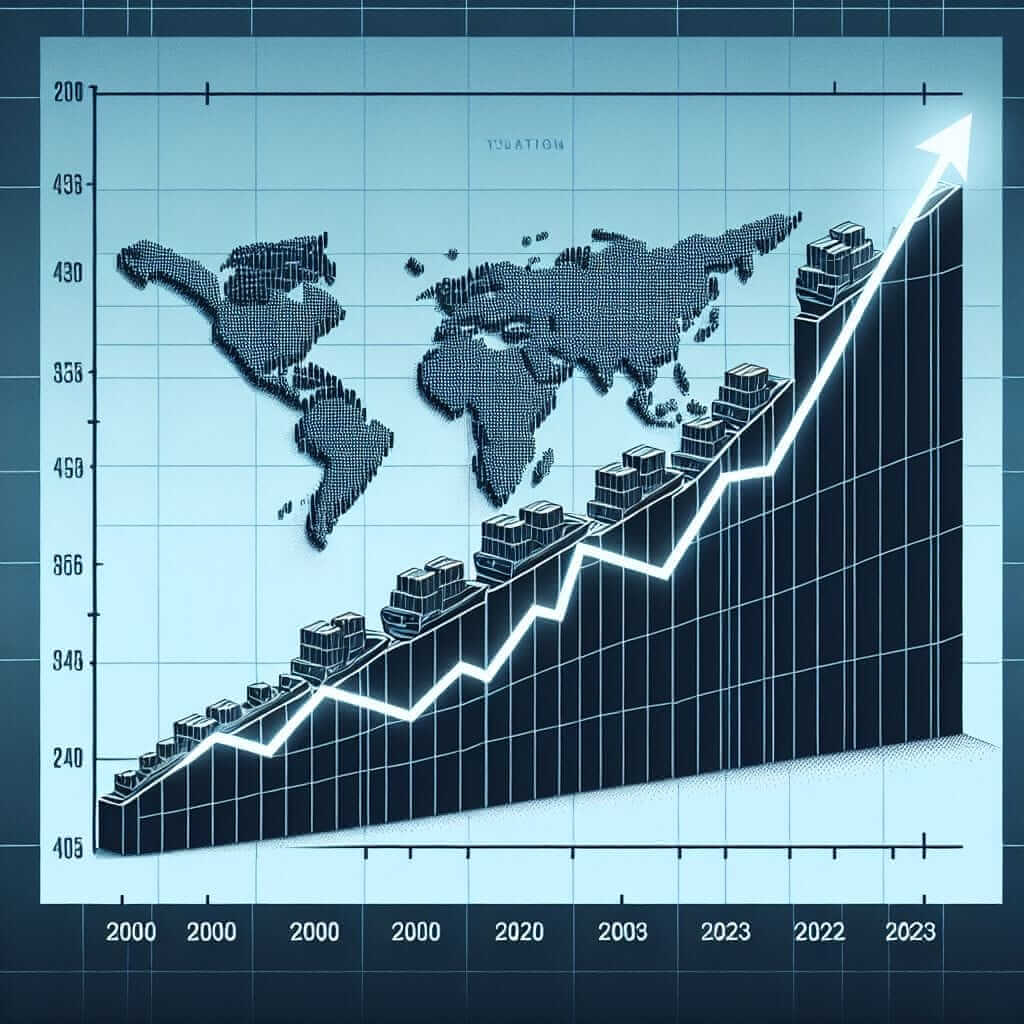The IELTS Writing Task 1 often presents data in various formats, and one common theme is analyzing trends over time. This is particularly relevant to topics like “Maritime Shipping Traffic (2000-2023),” which frequently appears in IELTS exams. Understanding how to effectively describe these trends is crucial for achieving a high band score.
This comprehensive guide will equip you with the tools and techniques needed to masterfully tackle IELTS Writing Task 1 questions related to maritime shipping traffic. We’ll delve into analyzing data, employing appropriate vocabulary, and crafting a well-structured response that showcases your writing prowess.
Understanding the Task: Analyzing Maritime Shipping Trends
Before diving into data interpretation, let’s familiarize ourselves with potential IELTS Writing Task 1 questions within this theme:
- The graph below shows the global volume of maritime shipping traffic from 2000 to 2023.
- Describe the changes in maritime shipping routes between Asia and Europe over the past two decades.
- Analyze the given data on container ship sizes and their impact on maritime traffic growth between 2000 and 2023.
These questions often require you to:
- Identify significant trends and patterns.
- Compare and contrast data points.
- Explain reasons for observed changes.
Sample Task and Model Answer
Let’s choose the first question and develop a model answer. We’ll assume the following data for this example:
| Year | Global Maritime Shipping Volume (in Billion Ton-Miles) |
|---|---|
| 2000 | 40 |
| 2005 | 50 |
| 2010 | 65 |
| 2015 | 75 |
| 2020 | 80 |
| 2023 | 90 |
Analyzing the Data
The table illustrates a consistent upward trend in global maritime shipping volume from 2000 to 2023. Starting at 40 billion ton-miles in 2000, the volume steadily increased, reaching 90 billion ton-miles by 2023.

Model Answer
The provided table illustrates the global volume of maritime shipping traffic over a 23-year period, from 2000 to 2023. Measured in billion ton-miles, the data reveals a clear upward trend in shipping activity.
In 2000, the global shipping volume stood at 40 billion ton-miles. This figure steadily climbed over the following years, reaching 50 billion in 2005 and 65 billion in 2010. The growth continued, albeit at a slightly slower pace, reaching 75 billion ton-miles by 2015.
Despite some fluctuations in the global economy, maritime shipping maintained its upward trajectory. By 2020, the volume had reached 80 billion ton-miles, eventually hitting 90 billion ton-miles in 2023.
Overall, the data paints a clear picture of consistent growth in global maritime shipping traffic between 2000 and 2023. This trend underscores the increasing reliance on seaborne trade and transportation in the 21st century.
(Word count: 162 words)
Writing Tips and Vocabulary
- Paraphrase the question: Don’t simply copy the question; rephrase it in your own words to demonstrate understanding.
- Use linking words: Connectives like “furthermore,” “however,” and “in contrast” ensure a smooth flow of information.
- Focus on trends: Highlight significant increases, decreases, or fluctuations, avoiding unnecessary details.
- Appropriate vocabulary: Use words like “surge,” “plummet,” “plateau,” and “fluctuate” to describe changes effectively.
Essential Vocabulary
- Maritime: (adjective) /ˈmærɪtaɪm/ Relating to the sea or shipping.
- Traffic: (noun) /ˈtræfɪk/ The movement of ships, vehicles, or aircraft.
- Volume: (noun) /ˈvɒljuːm/ The amount of something.
- Trend: (noun) /trend/ A general direction of change over time.
- Fluctuate: (verb) /ˈflʌktʃueɪt/ To rise and fall irregularly.
Conclusion
Mastering the art of describing trends in maritime shipping traffic is essential for succeeding in the IELTS Writing Task 1. By analyzing data thoroughly, using appropriate vocabulary, and structuring your response effectively, you can achieve a high band score. Remember to practice regularly, familiarize yourself with common maritime terms, and pay attention to grammar and spelling.